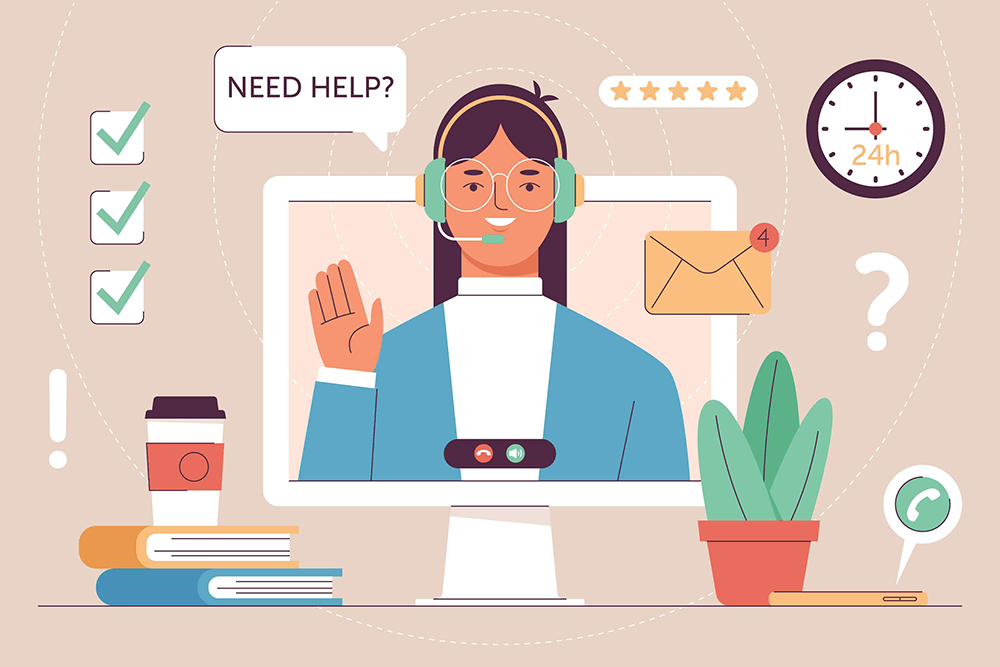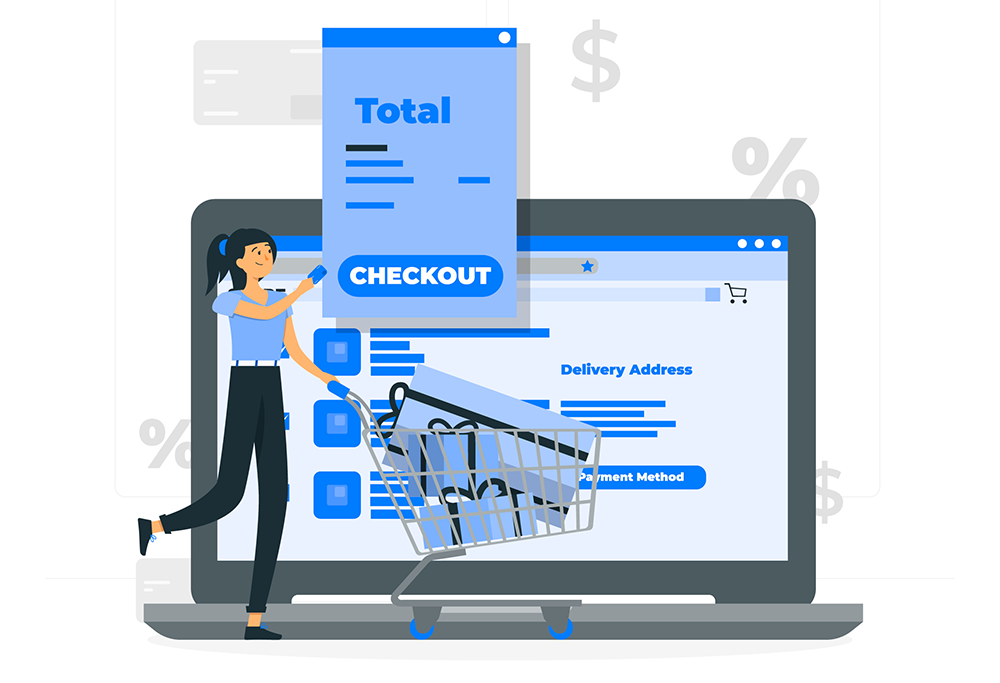
Just like any online business, multi-vendor marketplaces rely on satisfied customers. This is no surprise; in such a competitive industry, where shoppers have countless options, crafting an exceptional marketplace customer experience can truly distinguish your platform.
Industry leaders like Amazon and eBay have set the bar pretty high for customer expectations. Think of Prime’s two-day shipping. How can smaller, niche marketplaces possibly compete against that kind of convenience?
Thankfully, there are many ways your brand can offer amazing shopping journeys and enjoy huge profits, in the process. Today, we’ve put together a few tips on how to create awesome experiences for your customers. So let’s get right to it!
What Is Marketplace Customer Experience And Why Does It Matter?
Marketplace customer experience is all about the impression that your brand makes on customers throughout their entire customer journey. It includes but isn’t limited to aspects such as customer service and customer engagement.
The goal is to make every interaction that your customers have with your marketplace as positive and memorable as possible. This way, you can encourage them to keep coming back for more.

Customers who have exceptional experiences are willing to pay more for a product. In fact, one study found that a staggering 86% of shoppers share this sentiment. Furthermore, positive experiences can encourage customers to purchase repeatedly from a store as well as spread their positive feedback to others. Lastly, it can effectively promote customer loyalty and customer retention.
The dangers of ignoring the marketplace customer experience are astronomical. Recent research shows that over 96% of customers won’t return to a store after a bad experience.
So how do you keep your customers happy and more likely to patronize your business?
7 Great Strategies To Enhance Marketplace Customer Experience
Below, we discuss seven strategies that can help improve your marketplace customer experience and encourage consumers to keep returning to your platform for their shopping needs.
1. Get Vendors Onboard
Online marketplaces must manage multiple vendors to create a consistent experience across their platforms.
When customers visit your site, they engage directly with your brand, not necessarily the sellers. That means that if an individual vendor provides a negative customer experience, it can reflect poorly on the marketplace itself.
To keep your marketplace customers happy, you’ll need to ensure that each vendor looks for ways to enhance customer experience on their online store. Some marketplaces do this by requiring sellers to adhere to certain protocols or by creating templates for them to follow.

In addition, you can promote the value of customer experience to your third-party sellers. Tell them about its benefits, explaining how it can reduce customer churn rates, bring in new customers, and drive up revenue.
With this information, they’ll get excited about customer experience management rather than treating it as a mere checkbox task.
2. Develop Thorough Product Page Outlines
The product page plays an important role in customer experience management. After all, it’s one of the last stages of the customer journey before converting. Thankfully, you can help your vendors provide great marketplace customer experiences by giving them clear outlines to follow.
Shopify has pinned down some of the best practices for product pages, including:
- Descriptive product names
- Good imagery with options to zoom in
- Clear price points
- Readily available alternatives (e.g. colors, sizes, etc.)
- Prominent “Add to Cart” or “Purchase” button
- Clear, concise, and informative descriptions
While you’ll want to find ways to make this work for your unique marketplace, these tips can help you start thinking about specific factors each marketplace seller will adhere to.
Moreover, marketplaces can encourage vendors to implement SEO practices, which improves the visibility of their products in search engines. This, in turn, makes it easier for customers to locate desired products.
If you build your marketplace with a tool like WC Vendors, product SEO can also be an incentive for vendors to sell with you. Our pro accounts include product-level SEO features that enable high-quality search and sharing, allowing our clients to stand out above the competition and attract sellers.
3. Find Out What Your Customers Think
Most customers aren’t afraid to tell you what they think. Sometimes, they’ll volunteer the information through a review, social media post, or customer support comment. Marketplaces can keep in touch with their customers by checking in on this feedback periodically. However, they can also instigate feedback by sending out customer experience surveys.
Surveys are a great tool for marketplace customer experience management because they allow you to ask direct questions to your audience. Customer experience surveys typically include questions about how your customers feel about their interaction with your marketplace.

Qualtrics, a leading experience management solution, provides a few best practices for these types of questionnaires:
- Keep it short
- Use simple, plain language
- Don’t overdo the design to the point of distraction
- Consider when you’ll send it. For example, will you send it after a purchase? After cart abandonment? After the customer hasn’t purchased in a while?
- Tailor the survey to a specific audience
Not every survey you send out will get completed. After all, some customers won’t want to take the time. However, incentivizing completion – through a small discount or another simple perk – can help increase engagement with the survey and give you a larger pool of insights to pull from.
4. Stay Competitive With Pricing
Pricing is one of the largest motivators for customers. 87% consider it very or extremely influential for their decision-making process. Thus, it can make or break their experiences with a marketplace.
Part of the challenge is the sheer availability of competitor pricing. Roughly a third of customers compare prices before making a purchase. Unsurprisingly, they can quickly lose trust in your marketplace if they find substantially lower prices on another site.
To stay on top of this, marketplaces can monitor their sellers’ prices and compare them with competitors. True, this can be a tedious task. However, since the market for customer experience management has grown so much in recent years, many available tools can help automate some of the more burdensome tasks.
5. Offer Good, Accessible Customer Service
Good customer service is an important aspect of a positive experience. Customers want to know that they’re taken care of. They reward the brands that offer excellent support and punish those who don’t.
Hubspot found that 92% of customers would stop purchasing from an online store after just 3 bad service experiences. On the other hand, 95% of respondents to a Microsoft Dynamics survey said that quality service is important for customer loyalty.
Customers don’t expect much from brands, on this front. Basically, they just want support that’s personable, easy to access, and seamless. Despite the rise and convenience of artificial intelligence, most customers still prefer human interaction of some kind.

One easy step to implement immediately is to make the contact page easy to find. Don’t try to get too creative with the page name. Tried and true titles like “Contact,” “Help,” or “Support” work great.
Likewise, customers don’t want to search all over your site to find the appropriate link. Therefore, make it easy for them to find, and have systems in place to offer them the help that they’re looking for.
6. Enhance Your Search Function
With so many different vendors and sellers, customers can get lost in marketplaces like an unsupervised kid in a shopping mall. Thankfully, search functions make it easy for them to find the specific brand or product they’re looking for.
Here’s the problem: 72% of e-commerce sites don’t live up to customer expectations around their site search functions. This can damage the customer’s experience and make them frustrated enough to move to a different marketplace.
Here are a few questions that can help you determine if your search function is set up for success:
- Is your search bar easy to find?
- Is your search bar big enough to accommodate common queries?
- Do results load promptly?
- Are the top results closely related to the query?
- Do you use autocomplete or suggested queries that help your customers?
- Is your error tolerance strong enough to make up for mistakes customers might enter?
If your response to all these questions is “yes,” then your marketplace is probably in pretty good shape. If not, you may want to make some adjustments so your customers are less likely to get lost.
7. Offer Guest Checkout
Getting people to sign up for an account is a great end goal for a marketplace, and one of the easiest ways to do this is by only allowing those with accounts to make a purchase.
However, from an experience standpoint, this isn’t as helpful as you might think.
True, making site visitors start accounts allows you to have contact info for every buyer. Unfortunately, it can also damage the marketplace customer experience. Some buyers want to purchase without fully committing to an account. At this point in the internet age, customers have a harder time trusting brands that push their products too heavily. They don’t just hand out information to brands they’re unsure about.

Bascically, trust and experience go hand in hand with customers. Though it may not happen as quickly, allowing guest checkout helps build that trust in the beginning stages of the customer journey. Ultimately, this will lead to better experiences later on.
There are additional perks for your marketplace to implement guest checkout as well, including:
- Reduced checkout times
- Higher conversion rates
- Capture impulse buyers
- Decrease cart abandonment
Conclusion
Convenience and efficiency are top priorities for creating great marketplace customer experiences. Customers want to get the products they want, and they want to get them fast. Therefore, the more efficiently your marketplace fulfills these desires, the greater the potential for crafting exceptional customer experiences. This leads to great engagement, loyalty, and, ultimately, sales.
To recap, seven exceptional strategies that you can employ to improve marketplace customer experience include:
- Get vendors onboard
- Develop thorough product page outlines
- Find out what your customers think
- Stay competitive with pricing
- Offer good, accessible customer service
- Enhance your search function
- Offer guest checkout
Are you eager to learn more marketplace customer experience strategies? Then reach out to us and let us know; we’d be happy to answer your questions!